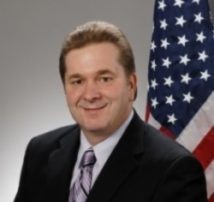Meeting - Town Board Police Commission/Workshop May 8th, 2018 (View All)
| Date | Name | Group(s) | Type | Approved | File |
|---|---|---|---|---|---|
| 05/08/2018 | Workshop 5-08-2018 Final Agenda (With Attachments) | Town Board | Agenda, Backup | ||
| 05/08/2018 | M_05-08-2018_PC | Town Board | Minutes |
Meeting Members
Meeting Overview
| Scheduled: | 05/08/2018 8:00 PM |
| Group(s): | Town Board |
| Location: | Orangetown Town Hall |
| Documents | Type | File |
|---|---|---|
| M_05-08-2018_PC | Minutes | |
| Workshop 5-08-2018 Final Agenda (With Attachments) | Agenda, Backup |
TOWN OF ORANGETOWN
WORKSHOP
TUESDAY, MAY 8, 2018
This meeting was opened at 8:02 p.m. Supervisor Day presided and the Deputy Clerk called the roll. Present were:
Councilman Denis Troy
Councilman Thomas Diviny
Councilman Paul Valentine
Councilman Gerald Bottari
Supervisor Chris Day
Also present:
Amanda Hyland, Supervisor’s Confidential Assistant
Joseph Thomassen, Deputy Clerk
Robert Magrino, Town Attorney
Teresa Kenny, Deputy Town Attorney
Jeff Bencik, Finance Director
James Dean, Superintendent of Highways
Aric Gorton, Superintendent of Parks, Recreation & Building Maint.
Pledge of Allegiance to the Flag of the United States of America: Town Board
The Orangetown Highway Department received the First Place Award / Cornell Local Roads Program / Design of the Hitch Witch / Hitch attaches to forklift, allowing employee to safely hook up and move equipment such as leaf machines, air compressors, asphalt roller trailers, etc., without needing a coworker to back them up and stand behind the reversing vehicle. Highway Development Welder/Fabricator, Bill Bodenstab conceptualized and welded the hitch.
The following Proclamations were presented:
- Mental Health Awareness Month / NAMI of Rockland (National Alliance on Mental Illness) – May 2018
- Building Safety Month – May 2018
- National Police Week (May 13-19, 2018)
- National Public Works Week (May 20-26, 2018)
Robert L. Reda, P.C. submitted a petition for a Zone Change / 37 Hunt Road, Orangeburg. The owners, Kazziegirl LLC and LSB10924 LLC, wants to change the zoning, from LIO to R80 for a veterinary office.
Donald Brenner, attorney for BNE Real Estate Group / The Pointe at Lake Tappan, Pearl River (Phase II), also known as The Club at Pearl River, submitted a petition for a zone change. They want to change the zoning from OP to a PAC District in order to build another 150 units.
RESOLUTION NO. 286 CONTINUATION PH / PROPOSED LOCAL LAW AMENDING TOWN CODE §6-5 (CHAPTER 6, BUILDING CONSTRUCTION ADMINISTRATION); AND ORANGETOWN ZONING CODE (CHAPTER 43) §4.11, §4.12 AND §4.13 (PERFORMANCE STANDARDS), AND §10.222, §10.323, §10.334 AND §10.335 (ADMINISTRATION AND ENFORCEMENT)
Councilman Troy offered the following resolution, which was seconded by Councilman Bottari and was unanimously adopted:
RESOLVED, that the Public Hearing, to consider the adoption of a Local Law amending the Code of the Town of Orangetown, Chapter 6, entitled Building Construction Administration, §6-5; and Chapter 43, entitled Zoning, Article IV, §4.1, entitled Performance Standards, and §4.11, §4.12 and §4.13 thereof, and Article X, entitled Administration and Enforcement, §10.222,
RESOLUTION NO. 286 – Continued
- 10.323, §10.334 and §10.335 thereof; was held open at the April 10, 2018, meeting of the Town Board, and continued to this evening and has remained open.
Ayes: Councilpersons Troy, Bottari, Diviny, Valentine
Supervisor Day
Noes: None
Summary of Public Comments:
There were no public comments.
PROPOSED LOCAL LAW
AMENDING CHAPTER 6, BUILDING CONSTRUCTION ADMINISTRATION, § 6-5, OF THE TOWN CODE; AND AMENDING CHAPTER 43, ZONING, § 4.11, § 4.12, § 4.13 (PERFORMANCE STANDARDS), AND § 10.2, § 10.323, § 10.334 AND § 10.335; OF THE ZONING CODE OF THE TOWN OF ORANGETOWN
Be it enacted by the Town Board of the Town of Orangetown as follows:
Section 1: Purpose: The Town Board (“Board”) of the Town of Orangetown, New York (“Town”) hereby finds that there is a critical and compelling need, in the public interests as set forth herein, to protect the health, safety and welfare of its residents to ensure that properties do not emit or cause to be emitted dangerous or objection ablelevels of smoke, particulate matter, and odor odors of such quantity, characteristic or duration which are injurious to human, plant or animal life or to property, or which unreasonably interfere with the comfortable enjoyment of life or property. The objective of this local law is to clarify Chapter 43 (Zoning) § 4.163, § 4.164, and §4.182 of the Code of the Town of Orangetown (“Orangetown Code”), relating toemissions, and to make related enforcement, procedural and administrative changes,including changes to Chapter 6 (Building Construction Administration).
Section 2: Orangetown Code Chapter 6 (Building Construction Administration), § 6-5, of the Orangetown Code shall be amended, and, as amended shall read as follows:
- 6-5 Duties and powers of the Building Inspector.
***
- B. HeThe Building Inspector shall receive applications and issue permits for the erection, alteration, removal and demolition of buildings or structures or parts thereof, and shall examine the premises for which such applications have been received or such permits have been issued for the purpose of insuring compliance with laws, ordinances and regulations governing building construction.
- C. HeThe Building Inspector shall issue all appropriate notices or orders to remove illegal or unsafe conditions, to require the necessary safeguards during construction and to insure compliance during the entire course of construction with the requirements of such laws, ordinances or regulation HeThe Building Inspector shall make all inspections which are necessary or proper for the carrying out of his duties, except that he may accept written reports of inspection from Building Inspectors, or other employees, of the Building Department Town of Orangetown’s (hereinafter referred to as “Orangetown”) Office of Building, Zoning and Planning Administration and Enforcement (hereinafter referred to as “OBZPAE”), or from generally recognized and authoritative reputable service and inspection bureaus, provided the same are certified prepared and signed by a qualified professional responsible official thereof.
- D. Whenever the same may be necessary or appropriate to assure compliance with the provisions of applicable statutes, codes, laws, ordinances or regulations covering relating to building construction, he the Building Inspector may require the performance of tests in the field, or on-site of private property subject of a building permit application, by experienced,
Proposed Local Law Continued
qualified professional(s) persons, or by accredited and authoritative reputable testing laboratories, or service bureaus or agencies.
- E. Whenever the same may be necessary or appropriate to assure compliance with the provisions of applicable statutes, codes, laws, ordinances or regulations relating to the use, maintenance or occupancy of land or buildings, including, but not limited to, assuring compliance with the Performance Standards set forth in § 4.1 of Chapter 43 (Zoning Code) of the Orangetown Code, and/or to assure compliance with the conditions of any applicable Orangetown land use board approval decisions, the Building Inspector may inspect, investigate and/or conduct tests, on-site of private property subject of a building permit application, which may include, with regard to the Performance Standards, inspecting, investigating and/or conducting tests while all mechanical equipment, machinery, installations and systems, that are appurtenant to the use that is subject to the Performance Standards, are in full operation. For purposes of said inspections, investigations and/or tests, the Building Inspector may engage, employ or retain the services of the Orangetown Department of Environmental Management and Engineering (hereinafter referred to as “DEME”), and/or expert consultants, to the extent, type and/or degree that the Building Inspector, DEME, and/or the expert consultants, deems necessary.
(i). If, as a result of the Building Inspector’s said inspection, investigation and/or testing, relating to an alleged violation of, or non-compliance with, the Performance Standards (Zoning Code §4.1) on the part of any nonresidential use subject to the Performance Standards (hereinafter referred to as “industrial user”), the Building Inspector has reasonable grounds to believe that a violation, or non-compliance, exists, subject to the provisions of Orangetown Zoning Code §4.182 (as may be applicable), the Building Inspector shall notify the Zoning Board of Appeals of the occurrence or existence of such possible violation, or non-compliance, in accordance with Zoning Code §10.335.
(ii). If, after public hearing on due notice, in accordance with Zoning Code §4.13, the Zoning Board of Appeals finds that a violation, or non-compliance, occurred or exists, and revokes and rescinds its Performance Standards (Zoning Code §4.1) approval decision, then the Building Inspector may revoke and rescind any Building Permit and/or Certificate of Occupancy that had been issued based upon such approval decision.
Section 3: Orangetown Code Chapter 43 (Zoning) §4.1, Performance Standards, shall be amended, and, as amended shall read as follows:
- 4.1. Performance Standards.
All references herein contained to certain standards which indicate a publisher and date are hereby deemed to mean the latest revised edition of such standard. Where a federal, state, county or local agency promulgates standards which are inconsistent with, or different from, those herein enumerated, the more restrictive standards shall control. Unless otherwise stated, all citations to statutory sections (“§”) are from Chapter 43, the Zoning Code, of the Code of the Town of Orangetown (hereinafter referred to as “Orangetown” and “Zoning Code”).
4.11. Applicable to all nonresidential uses. No land or building shall be used or occupied for a nonresidential use in any manner as to create any dangerous, injurious, noxious or otherwise objectionable fire, explosive, radioactive or other hazard; noise or vibration; smoke, dust, odor or other form of air pollution; electrical or other disturbance; glare; liquid or solid refuse or wastes; a condition conducive to the breeding of rodents or insects or other substance, condition or element, all referred to herein as “dangerous or objectionable elements,” in a manner or amount as to adversely affect the surrounding area. However, any nonresidential use, except those expressly prohibited by this code in §4.4, may be undertaken, and maintained, if it conforms to the district regulations, and the regulations of §4.1, Performance standards, limiting dangerous and objectionable elements at the point of determination of their existence as provided in this section§4.1.
4.12. Performance standards procedure. Only those uses specified in the Zoning Code Use Table, Columns 2, 3 and 4, as are subject to the performance standards procedure of
Proposed Local Law Continued
- 10.334, §4.12, are subject to performance standards procedure requiring the Orangetown Zoning Board of Appeals’ (hereinafter referred to as “ZBA”) approval as specified in §10.334 in obtaining a building permit or certificate of occupancy, or both (hereinafter referred to as “industrial user”), unless the Building Inspector has reasonable grounds to believe that any other proposed use, including any building or use accessory to a use subject to performance standards procedure, is likely to violate performance standards, in which event the applicant industrial user shall comply with the procedure in §10.334 in obtaining a building permit or certificate of occupancy, unless the ZBA Board of Appeals finds that compliance therewith is unnecessary.
4.13. Initial, and Continued, enforcement provisions. Whether or not compliance with performance standards procedure in §10.334, in obtaining a building permit or certificate of occupancy, is required for any particular use,
(a). iInitial, and continued, compliance with performance standards is required of every new nonresidential use, or change in such use, including, but not limited to, §10.231(c), in all Zoning Districts, as provided in §10.335, for all nonresidential uses that are subject to §4.1. Pursuant, but not necessarily limited, to §4.13, §10.334(c) and §10.335, initial, and continued, compliance with the performance standards (§4.1)
is required, and all building permits and certificates of occupancy, issued for a use subject to §4.1, is conditioned, and contingent, upon the industrial user conforming to the performance standards, and the industrial user’s paying of the fees, to the Town of Orangetown, for services of Orangetown’s own expert consultants deemed reasonable and necessary by Orangetown’s Department of Environmental Management and Engineering (hereinafter referred to as “DEME”), Orangetown’s Office of Building, Zoning and Planning Administration and Enforcement (hereinafter referred to as “OBZPAE”), and/or the ZBA, for said consultants’ inspections, investigations, research, studies, tests, advice and/or reports relating to determining compliance with the industrial user’s conformance to the performance standards (§4.1).
(b). The industrial user’s initial, and continued, compliance with the performance standards (§4.1) shall include the following:
(i). Inspections, investigations and/or testing, on the industrial user’s site, while all mechanical equipment, machinery, installations and systems, that are appurtenant to the use that is subject to the performance standards (§4.1), are in full operation, by OBZPAE, DEME, and/or the Orangetown-retained expert consultants, to the extent, type and/or degree that OBZPAE, DEME, and/or the Orangetown-retained expert consultants, deem necessary.
(ii). The industrial user’s full, and complete, compliance with any and all laws, statutes, rules and regulations of the NYS Department of Environmental Conservation and federal Environmental Protection Agency, that also regulate the use that is subject to the performance standards (§4.1).
(iii). OBZPAE, DEME, and/or the Orangetown-retained expert consultants, shall investigate any alleged violation of, or non-compliance with, the performance standards (§4.1) by the industrial user, as per §4.13(b)(i); and, if there are reasonable grounds to believe that a violation, or non-compliance, exists, OBZPAE, DEME, and/or the Orangetown-retained expert consultant(s), shall notify the ZBA, in writing, of the occurrence, or existence, of a probable violation, or non-compliance, thereof. Upon receiving such notification, the ZBA may further investigate the alleged violation or non-compliance, if the ZBA deems it necessary in its discretion; and, for such further investigation, the ZBA may utilize, or retain, the services of OBZPAE, DEME, and/or the Orangetown-retained expert consultants. Thereafter, after holding a Public Hearing on due notice, including notice to the industrial user (except for posting of signs at the industrial user’s subject site, which signs shall not be required), the fees for which Public Hearing shall be paid for by the industrial user, if the ZBA finds that a violation, or non-compliance, occurred or exists, the ZBA may revoke and rescind its performance standards (§4.1) approval decision, and any building permit and/or certificate of occupancy that has been issued, based upon such approval decision, shall also be deemed revoked and
Proposed Local Law Continued
rescinded; which shall be in addition to any other legal remedies that the Town of Orangetown may pursue, including, but not necessarily limited to, prosecution of violations in the Orangetown Justice Court pursuant to §10.2 and/or §10.6, and/or commencement of a civil action or proceeding in the NYS Supreme Court, pursuant to NYS Town Law §135(1) and/or §268(2).
***
4.163. Smoke.
(a). There shall be no emission and/or discharge into the atmosphere at any point from any chimney, stack, vent or otherwise, of visible black, gray or white smoke other than that caused by steam, of a shade darker than No. 1 on the Ringelmann Smoke Chart as published by the United States Bureau of Mines (Power’s Micro-Ringelmann Chart, McGraw Hill Publishing Company, 1954, may be used), except that visible gray smoke of a shade not darker than No. 2 on said chart may be emitted for not more than four minutes in any 30 minutes. These provisions, applicable to visible gray smoke, shall also apply to visible smoke of a different color but with an equivalent apparent opacity, or exhibiting greater than 20 percent opacity (6-minute average) per EPA Method 9,.
(b). Exceedance during two consecutive days requires the opacity producer to conduct EPA Method 9 analysis within two business days of occurrence – or evaluate Continuous Opacity Monitoring System(s) (COMS) during the same period. – and Aa facility-responsible person must notify the Town within one business day of receiving the assessment results, as well as provide any other credible evidence. The Town will evaluate compliance and determine further action.
4.164. (a). Fly ash, dust, fumes, vapors, gases and other forms of air pollution derived from combustion. There shall be no emission and/or discharge which can any cause damage to the health, to of humans or other animals, or vegetation, buildings or structures, or other forms of property, or which can cause any excessive soiling. of any point and in no event any emission from any chimney or otherwise of any solid or liquid particles in concentrations exceeding 0.3 grains per cubic foot of the conveying gas or air at any point. For measurement of the amount of particles in gases resulting from combustion, standard corrections shall be applied to a stack temperature of 500° F. and 50% excess air. Emissions related to combustion must comply with the standards and regulations set forth in the New York State Department of Environmental Conservation’s 6 NYCRR Subpart 227-1 6 NYCRR Part 227, Stationary Combustion Installations, as amended and/or supplemented from time to time, as applicable.
4.164.(b). Ash, dust, fumes, vapors, gases and other forms of air pollution not derived from combustion. There shall be no emission and/or discharge which can cause any damage or injury to the health of humans and other animals, or vegetation, buildings or structures or other forms of property, or which can cause excessive soiling.
(c). Emissions of air contaminants to the outdoor atmosphere from any process emission source or emission point are restricted in accordance with the New York State Department of Environmental Conservation’s 6 NYCRR Subpart 212 6 NYCRR Part 212, Process Operations, as amended and/or supplemented from time to time, as applicable.
***
4.181. Noise. At the specified points of measurement,
(a). The the sound-pressure level of noise radiated continuously from a facility at nighttime shall not exceed the values given in Table I in any octave band of frequency, in order to provide an environment free from noise that affects a reasonable person’s people’s well-being and or use, enjoyment and or value of property, or that interferes with the a reasonable person’s repose of life, or would unreasonably or unnecessarily interfere with public health, safety, and or welfare. (b). In the event of noise complaints arising from residents, commercial, or other Town inhabitants, the sound-pressure level shall be measured with a sound-level meter and an octave band analyzer that conforms to specifications published by the equipment manufacturers, and such standards as published by the American National Standards Institute (ANSI), the American Society for Testing and Material, or other contemporary standards-establishing organization accepted in the United States.by the American Standards Association. (American Standard Sound Level Meters for
Proposed Local Law Continued
Measurement of Noise and Other Sounds, Z24.3-1944, American Standards Association, Inc., New York, New York, and American Standard Specification for an Octave-Band Filter Set for the Analysis of Noise and Other Sounds, Z24.10-1953, American Standards Association, Inc., New York, New York, shall be used.)(c). Unless otherwise resolved with the Town, the owner or operator of the location/source of such elevated, complaint-producing noise, shall prepare and provide a Noise Monitoring Plan to the Town within 10-business days of written notice by the Town, and such Plan shall be implemented within 10-business days of Plan approval by the Town (unless extended by the Town, if the Plan requires the ordering, purchase and/or installation of equipment, but such extension should be no longer than the time period to order, purchase and install such noise mitigation equipment), and the written report of such monitoring shall be provided to the Town within 10- business days following completion of noise monitoring. Failure to meet noise compliance will result in cessation of the offending noise source until compliance is met. The Noise Monitoring Plan will employ “A-weighting” unless another weighting scale is more appropriate based on industry standards, and shall address:
(i). The number and location of monitoring sites;
(ii). The timing and frequency of surveys;
(iii). Methods and standards to be followed. This will include methods used to identify and remove measurement results for time periods affected by sound associated with any temporary events or activities (such as noise from non-related construction or other activities), and during periods where wind speeds exceed 5 m/s or the rainfall rate exceeds 6 mm/hour; and
(iv). Timeframes for monitoring and reporting to the Town in the event they are otherwise than stated in this Performance Standard.
TABLE I
Maximum permissible sound-pressure levels at specified points of measurement for noise radiated continuously from a facility between the hours of 10:00 p.m. and 7:00 a.m.
Frequency Band Cycles per second Sound Pressure Level Decibels
“A-weighted” scale (dBA)*
Re. 0.002 dyne/cm.2
20-75 69
75-150 54
150-300 47
300-600 41
600-1200 37
1200-2400 34
2400-4800 31
4800-10,000 28
* “A-weighted” scale (dBA) is the filtering of sound measurement to account for the perceived loudness of noise not necessarily correlating with sound levels. Sound level meters set to A-weighting minimize low-frequency noise similar to the human ear, Sound intensity is measured in units of decibels, dB.
If the noise is not smooth and continuous and is not radiated between the hours of
10:00 p.m. and 7:00 a.m., one or more of the corrections in Table II below shall be added to or subtracted from each of the decibel levels given above in Table I.
TABLE II
Type of Operation of Character of Noise Correction in Decibels
Daytime operation only Plus 5
Noise source operates less than 20% of any one hour Plus 5*
Noise source operates less than 5% of any one-hour period Plus 10* Noise source operates less than 1% of any one-hour period Plus 15*
Noise of impulsive character (hammering, etc.) Minus 5
Noise of periodic character (hum, screech, etc.) Minus 5
* Apply one of these corrections only.
4.182. Odors. No emission of odorous gases or other odorous matter in such quantities as to be offensive at the specified points of measurement. Any process which may involving the creation or emission of any odors shall be provided with a secondary safeguard system, so that control will be maintained if the primary safeguard system should fail.
Proposed Local Law Continued
There is hereby established, as a guide in determining such quantities of offensive odors, Table III (Odor Thresholds) in Chapter 5, Air Pollution Abatement Manual, Copyright 1951 by Manufacturing Chemists’ Association, Inc., Washington, D.C.
(a). No person, entity or process will emit, or cause or allow to be emitted, There shall be no emission and/or discharge of objectionable odors or other matter present in the ambient air that, by itself, or in combination with other odors, gases or vapors from the same facility, is offensive, foul, unpleasant or repulsive to olfactory reception to a reasonable person of normal sensibilities, beyond the property borders of the emitting source. Odor(s) will be deemed objectionable when documented assessment by the Town, pursuant to the procedures in this section, shows evidence that the odor likely could, or does, cause injury, detriment, nuisance or annoyance to persons or to the public, based on observations of the odor’s nature, intensity, duration, location, and level of complaint.
(b). Upon documented assessment by the Town, pursuant to the procedures in this section, of the existence of an objectionable odor, the Town will notify the odor- producing facility and direct that an Odor Management and Control Plan acceptable to the Town be submitted, to the Town, that outlines the operational cause of the violation objectionable odor, and, if available, chemistry of the offending odor(s), and literature evidence of odor thresholds and impacts, methods proposed to mitigate the problem, and the schedule by which the Plan will be implemented and completed. The Town will review the Odor Management and Control Plan, and either approve it, or request supplemental information from the facility to complete any deficiencies or shortcomings.
(c). To enforce this Performance Standard, objectionable odors will be considered detected and a violation of this § 4.182 when either:
(i). A Town inspector/code enforcement officer detects documents an objectionable odor that, by its nature, intensity, duration, location, and level of complaint, is, at least minimally, a nuisance or annoyance to persons or to the public; or
(ii). The Town receives initially five (5) or more complaints from individuals, households or businesses within seven (7) days, or fifteen (15) or more complaints within a 30-day period, and the odor issue is verified by the Town. The Town’s odor complaint records will include:
(a) Name, address, email and phone number of complainant.
(b) Time and date of submission of complaint to the Town,call.
(c) Description of nuisance odor.
(d) Estimated location or source of complaint.
(e) If possible, prevailing wind or weather conditions observed, and
(f) If OBZPAE or DEME finds noncompliance per above (first bullet), then there shall be deemed noncompliance; and
(iii). One (1) volume of the odorous air has been diluted with up to five (5) volumes of odor-free air and the odor is still perceptible, as measured by the Town through the use of reliable olfactometer field instruments, devices, or methods.; and
Section 34: This local law shall become effective immediately upon filing with the New
York State Secretary of State.
PROPOSED AMENDMENTS TO ORANGETOWN CODE:
CHAPTER 43, ZONING (PERFORMANCE STANDARDS), §4.11, §4.12, §4.13,
- 10.222, §10.323, §10.334 AND §10.335; AND
CHAPTER 6, BUILDING CONSTRUCTION ADMINISTRATION, §6-5
MAY 1, 2018, REVISIONS (ITALICIZED)
[PLEASE NOTE THAT THE PROPOSED AMENDMENTS TO ZONING CODE, (CHAPTER 43) §10.222, §10.323, §10.334 AND §10.335 WERE INADVERTENTLY OMITTED FROM THIS VERSION; HOWEVER, SAID AMENDMENTS HAVE NOT CHANGED SINCE THE PREVIOUS VERSION]
RESOLUTION NO. 287 CONTINUE PH/ PROPOSED LOCAL LAW AMENDING TOWN CODE §6-5 (CHAPTER 6, BUILDING CONSTRUCTION ADMINISTRATION); AND ORANGETOWN ZONING CODE (CHAPTER 43) §4.11, §4.12 AND §4.13 (PERFORMANCE STANDARDS), AND §10.222, §10.323, §10.334 AND §10.335 (ADMINISTRATION AND ENFORCEMENT
Supervisor Day offered the following resolution, which was seconded by Councilman Diviny was unanimously adopted:
RESOLVED, that this public hearing is hereby continued to June 26, 2018, at 8:00 PM.
Ayes: Supervisor Day
Councilpersons Diviny, Troy, Valentine, Bottari
Noes: None
RESOLUTION NO. 288 RESCIND RESOLUTION NO. 135 NANETTE J. ALBANESE / BOARD OF ASSESSMENT REVIEW
Councilman Diviny offered the following resolution, which was seconded by Councilman Troy and was unanimously adopted:
RESOLVED, that the Town Board rescinds Resolution No. 135 – Nanette J. Albanese was hereby appointed a Member to the Board of Assessment Review, to fill the unexpired term of Matt Reid (Resigned 2018), commencing January 1, 2018 and expiring December 31, 2020.
Ayes: Councilpersons Diviny, Troy, Valentine, Bottari
Supervisor Day
Noes: None
RESOLUTION NO. 289 ENTERED EXECUTIVE SESSION PENDING LITIGATION AND PERSONNEL MATTERS
In attendance, at this Executive Session, were Supervisor Day, Councilpersons Troy, Diviny, Valentine and Bottari, Michael Lawler, Amanda Hyland, Robert Magrino, Teresa Kenny, and Jeff Bencik.
Supervisor Day offered the following resolution, which was seconded by Councilman Diviny and was unanimously adopted:
RESOLVED, at 9:12 pm, the Town Board entered Executive Session to discuss pending litigation and personnel matters. Supervisor Day said there will be no further votes.
Ayes: Supervisor Day
Councilpersons Diviny, Troy, Valentine, Bottari
Noes: None
RESOLUTION NO. 290 RE-ENTERED WORKSHOP AND ADJOURNED
Supervisor Day offered the following resolution, which was seconded by Councilman Diviny and was unanimously adopted:
RESOLVED, at 9:40 pm, the Town Board re-entered the Workshop and adjourned.
Ayes: Supervisor Day
Councilpersons Diviny, Troy, Valentine, Bottari
Noes: None




